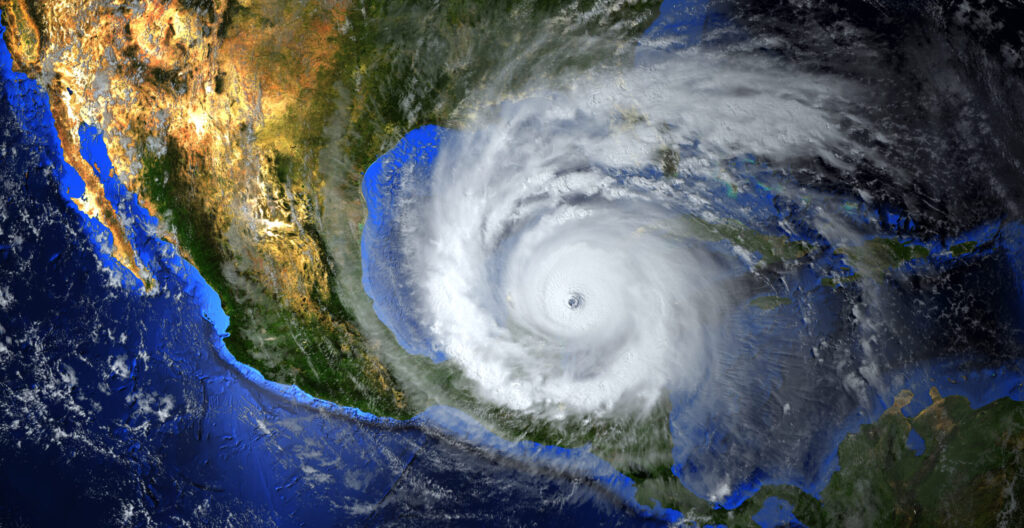When assessing the potential impacts of a hurricane or tropical storm, the angle at which the storm approaches the coast plays a crucial role in determining the severity of the effects. The storm’s intensity, forward speed, size, and the shape of the coastline all influence the final outcome, but how close the storm comes to land—and whether it makes a direct landfall or tracks parallel to the shore—can significantly affect the resulting damage.
Direct Landfall: Immediate and Intense Impact
A direct landfall occurs when the hurricane’s center crosses over land, bringing immediate and severe consequences. The impact of a direct landfall is often most intense to the right side of the storm’s path, where the strongest winds and storm surge are concentrated. The storm surge, a major concern with landfalling hurricanes, results from strong winds pushing water towards the shore, creating an abnormal rise in sea level. According to the National Hurricane Center, this surge is “an abnormal rise of water generated by a storm, over and above the predicted astronomical tides,” leading to extreme coastal flooding, especially when combined with normal high tides.
Storm Surge: A Critical Threat
The storm surge is typically the deadliest aspect of a hurricane’s impact. It can cause widespread flooding in coastal regions, inundating homes, infrastructure, and natural habitats. The severity of the surge is influenced by the storm’s intensity and the angle of approach, making direct landfalls particularly dangerous due to the high surge and intense winds that strike directly onshore.
Coastal Flooding and Rainfall
In addition to storm surge, a direct landfall can also result in severe coastal flooding and heavy rainfall. As the storm’s center moves across land, it brings torrential rains, leading to flash flooding and prolonged inundation. The amount of rainfall can vary based on the storm’s speed and size, but the immediate area around the landfall site often experiences the highest totals.
Parallel Track: Widespread but Less Intense
When a hurricane tracks parallel to the coastline without making landfall, the immediate impacts are usually less severe than a direct hit. The storm surge at any specific location is generally reduced because the storm’s center remains offshore. However, the affected area can be much larger, and the difficulty of forecasting the exact impact increases.
Expanded Impact Area
As the storm moves parallel to the coast, hurricane conditions such as strong winds and heavy rains can affect a broader swath of the coastal region. This extended impact area means that while the intensity might be less at any single point compared to a direct landfall, the effects are felt over a larger region. Coastal residents may experience significant wind damage and flooding even if the storm does not make direct contact with their location.
Complications in Forecasting
Forecasting hurricanes that track parallel to the coast is more complex due to the increased area of potential impact. Small deviations in the storm’s track—just 5 to 10 miles—can lead to significant differences in the severity of conditions experienced onshore. A slight shift in the storm’s path can mean the difference between receiving intense winds and rainfall or experiencing milder conditions.
Variable Effects Based on Distance
The closer the hurricane’s center is to the coast, the worse the conditions will generally be. For example, a storm that passes within a few miles of the shore may still bring damaging winds and substantial storm surge, while one that remains further offshore might only cause less severe impacts. The shape of the coastline and the storm’s forward speed also influence where the worst effects are felt.
Rainfall and Wind Variations
The amount of rainfall and wind strength experienced during a parallel track hurricane can vary widely depending on the storm’s proximity to the coast. Areas closer to the storm may receive heavier rains and stronger winds, while regions further away might experience only light rain and moderate winds. This variability can make it challenging for residents to prepare adequately.
Danger Despite Lack of Landfall
It’s important to remember that hurricanes tracking parallel to the coast can still be extremely dangerous. Even if a hurricane does not make landfall, it can still produce significant storm surge, heavy rainfall, and damaging winds. Coastal residents should not underestimate the risks associated with such storms, as the impacts can still be severe and widespread.
Preparedness and Safety
Regardless of whether a hurricane makes landfall or tracks parallel to the coast, preparedness is key. Residents should stay informed through reliable sources, have an evacuation plan in place, and ensure their homes are fortified against potential wind and water damage. Monitoring official weather updates and following evacuation orders can help mitigate the risks and protect lives and property.
Understanding the differences in impact between a direct landfall and a parallel track can help communities better prepare and respond to hurricanes. Both scenarios pose significant risks, and preparedness remains crucial in safeguarding against the diverse threats posed by these powerful storms.


